RMIT/SIM International Trade Assignment 2: Free Trade Impact
VerifiedAdded on 2022/10/10
|7
|1013
|12
Homework Assignment
AI Summary
This assignment analyzes the impact of international trade on industrial pay inequality for Australia and Singapore, using data from 1985-2005. It investigates the correlation between trade openness and the Theil index, a measure of industrial pay inequality. The analysis includes calculating correlation coefficients and interpreting their implications. The assignment applies the Stolper-Samuelson theorem to explain how trade affects skilled and unskilled labor wages in each country, considering factors such as technology intensity and labor market characteristics. The findings validate the theory that the relative prices of products influence income distribution, thereby determining industrial pay inequality. The student uses the Heckscher-Ohlin model and regression analysis to test the relationship between free trade and income stagnation. The assignment follows the provided brief, which includes data acquisition from the World Bank and UTIP-UNIDO, merging the data, and answering specific questions regarding graphs, correlation coefficients, and the application of economic theory.
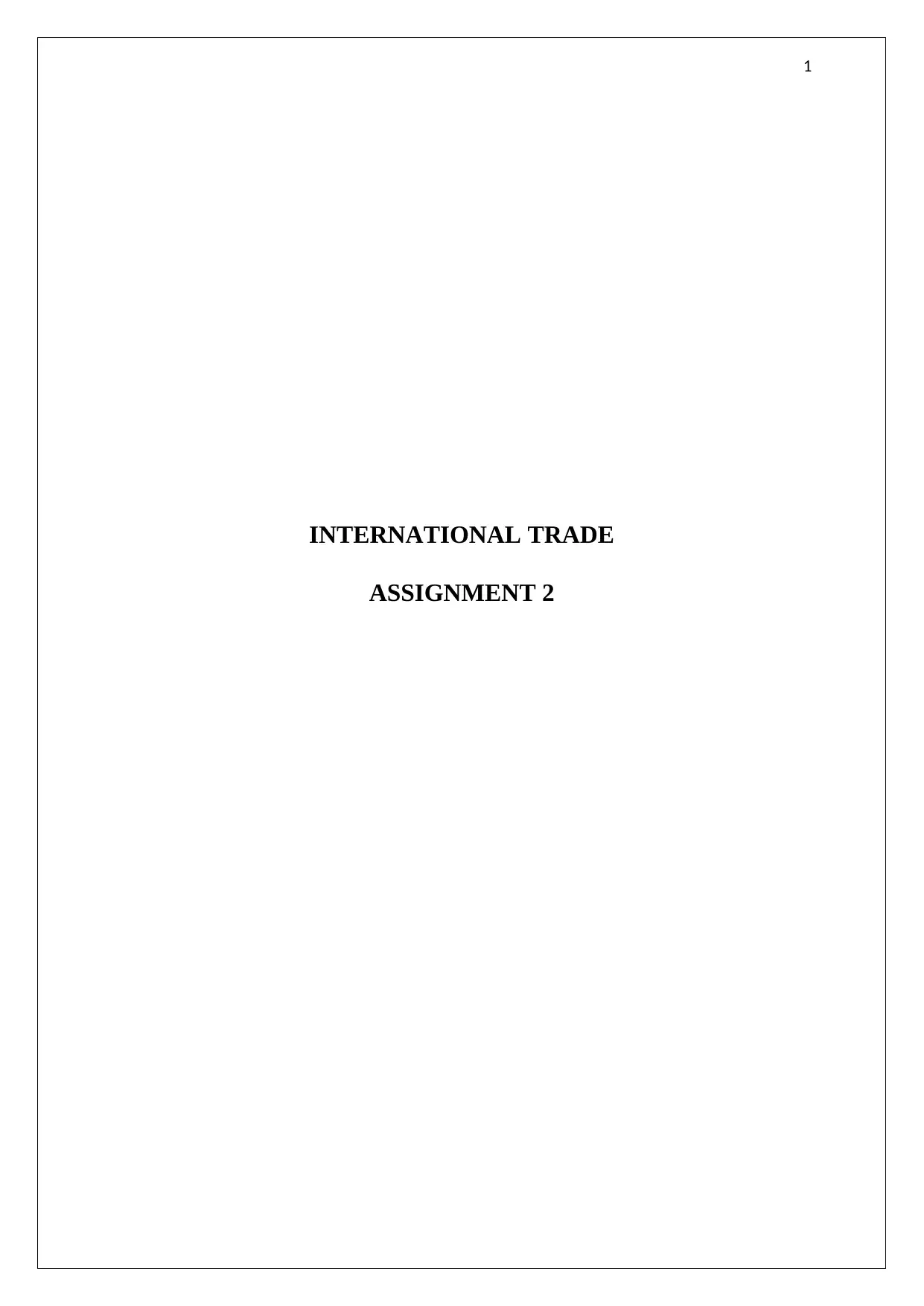
1
INTERNATIONAL TRADE
ASSIGNMENT 2
INTERNATIONAL TRADE
ASSIGNMENT 2
Paraphrase This Document
Need a fresh take? Get an instant paraphrase of this document with our AI Paraphraser
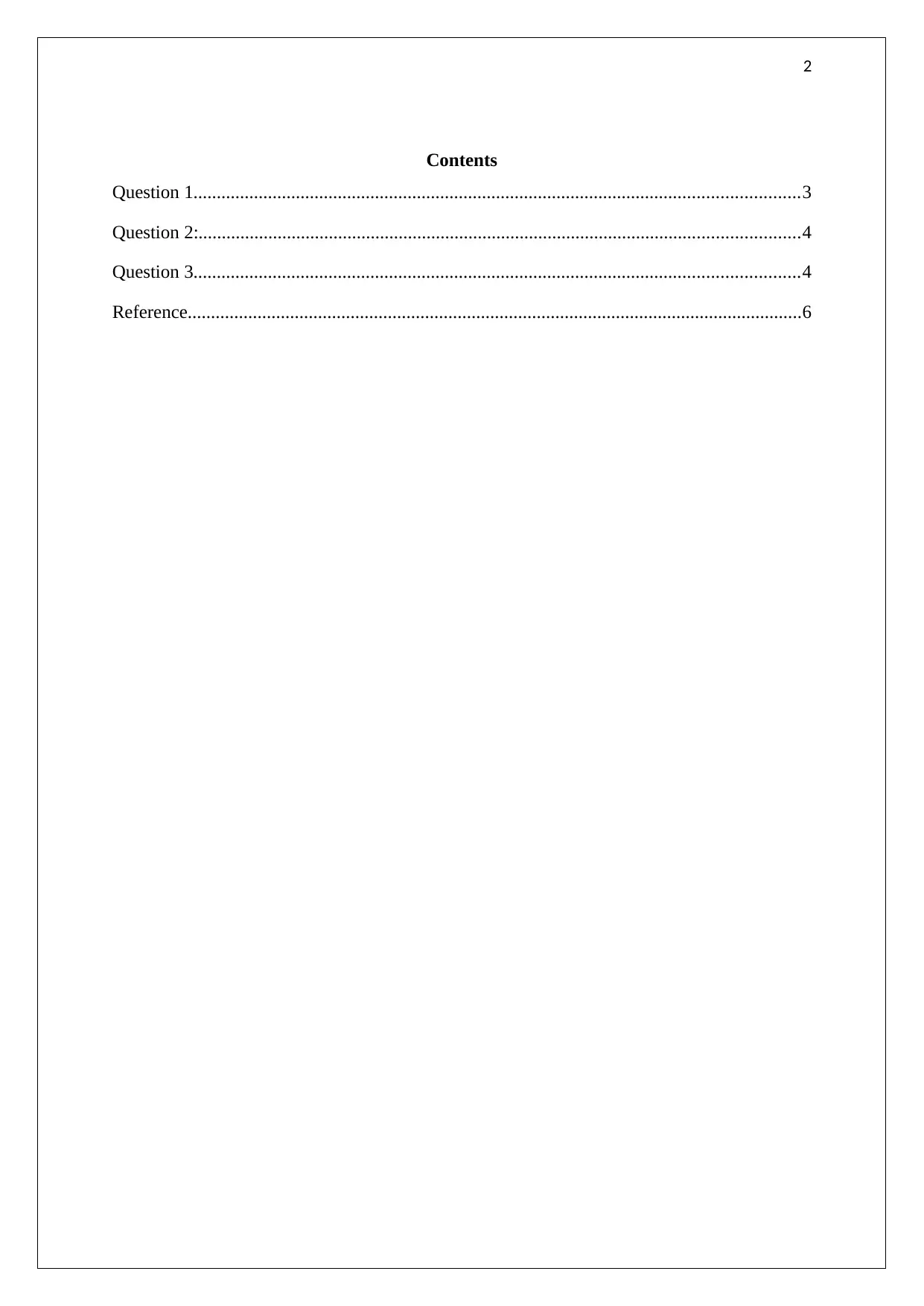
2
Contents
Question 1..................................................................................................................................3
Question 2:.................................................................................................................................4
Question 3..................................................................................................................................4
Reference....................................................................................................................................6
Contents
Question 1..................................................................................................................................3
Question 2:.................................................................................................................................4
Question 3..................................................................................................................................4
Reference....................................................................................................................................6
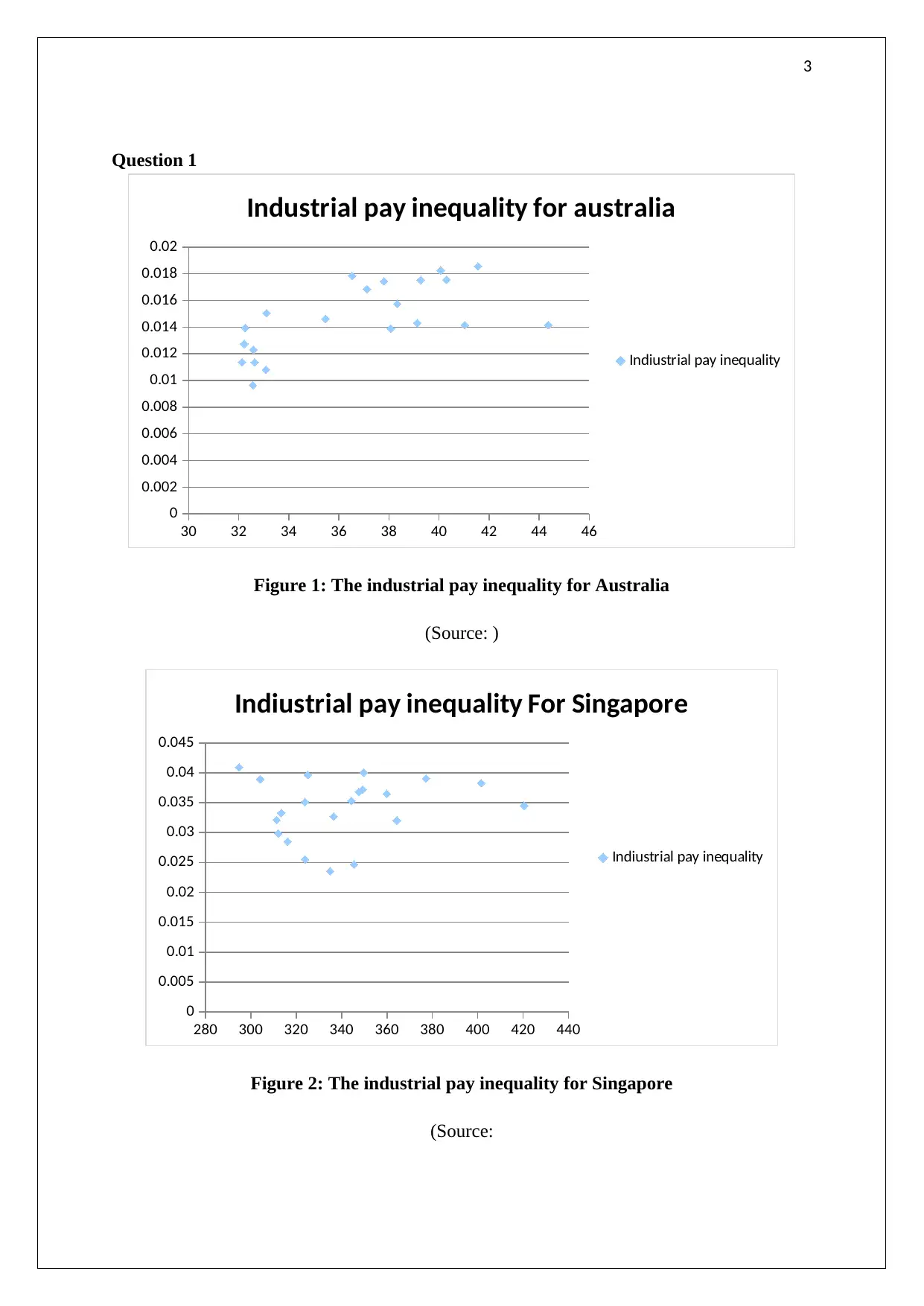
3
Question 1
30 32 34 36 38 40 42 44 46
0
0.002
0.004
0.006
0.008
0.01
0.012
0.014
0.016
0.018
0.02
Industrial pay inequality for australia
Indiustrial pay inequality
Figure 1: The industrial pay inequality for Australia
(Source: )
280 300 320 340 360 380 400 420 440
0
0.005
0.01
0.015
0.02
0.025
0.03
0.035
0.04
0.045
Indiustrial pay inequality For Singapore
Indiustrial pay inequality
Figure 2: The industrial pay inequality for Singapore
(Source:
Question 1
30 32 34 36 38 40 42 44 46
0
0.002
0.004
0.006
0.008
0.01
0.012
0.014
0.016
0.018
0.02
Industrial pay inequality for australia
Indiustrial pay inequality
Figure 1: The industrial pay inequality for Australia
(Source: )
280 300 320 340 360 380 400 420 440
0
0.005
0.01
0.015
0.02
0.025
0.03
0.035
0.04
0.045
Indiustrial pay inequality For Singapore
Indiustrial pay inequality
Figure 2: The industrial pay inequality for Singapore
(Source:
⊘ This is a preview!⊘
Do you want full access?
Subscribe today to unlock all pages.

Trusted by 1+ million students worldwide
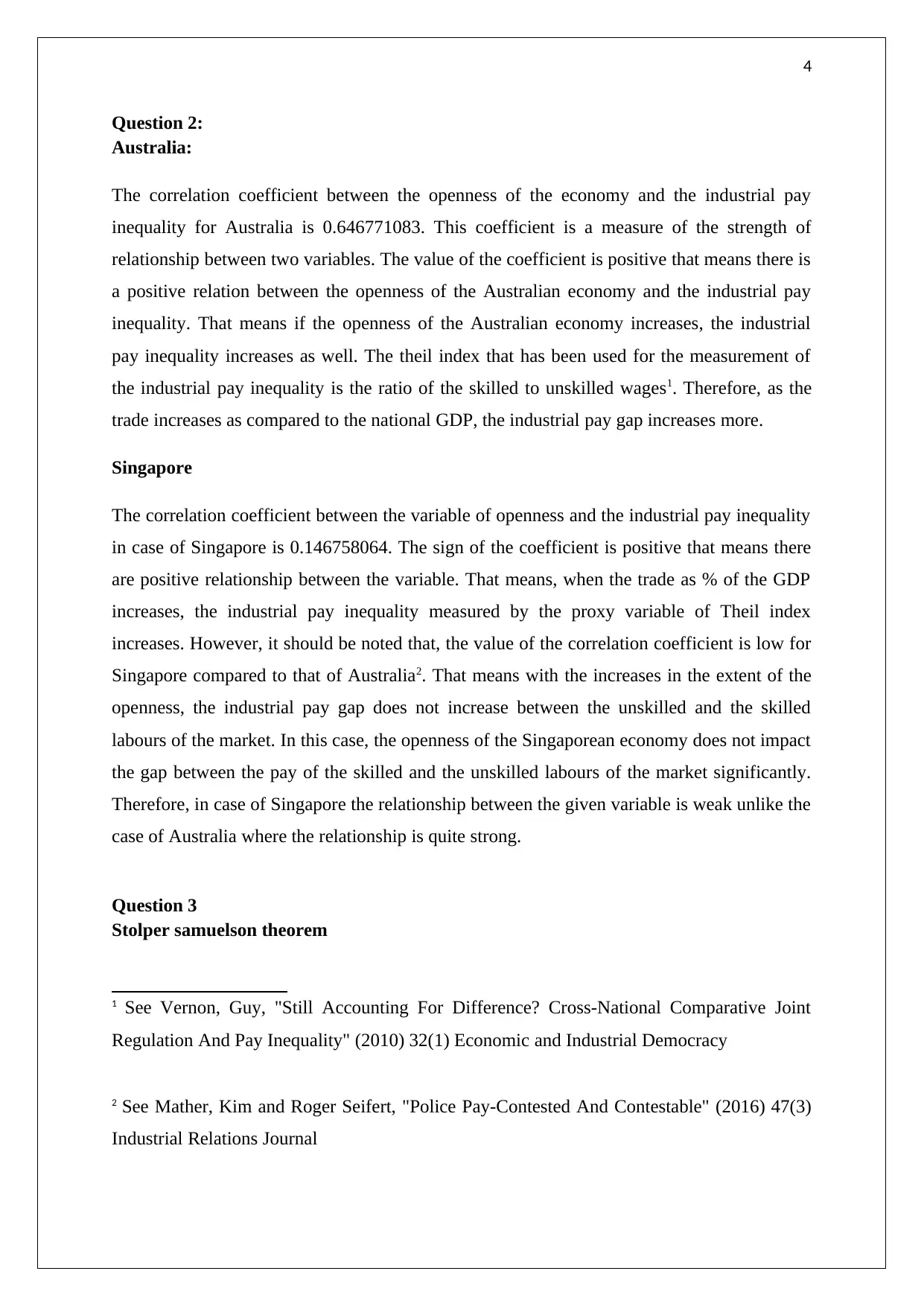
4
Question 2:
Australia:
The correlation coefficient between the openness of the economy and the industrial pay
inequality for Australia is 0.646771083. This coefficient is a measure of the strength of
relationship between two variables. The value of the coefficient is positive that means there is
a positive relation between the openness of the Australian economy and the industrial pay
inequality. That means if the openness of the Australian economy increases, the industrial
pay inequality increases as well. The theil index that has been used for the measurement of
the industrial pay inequality is the ratio of the skilled to unskilled wages1. Therefore, as the
trade increases as compared to the national GDP, the industrial pay gap increases more.
Singapore
The correlation coefficient between the variable of openness and the industrial pay inequality
in case of Singapore is 0.146758064. The sign of the coefficient is positive that means there
are positive relationship between the variable. That means, when the trade as % of the GDP
increases, the industrial pay inequality measured by the proxy variable of Theil index
increases. However, it should be noted that, the value of the correlation coefficient is low for
Singapore compared to that of Australia2. That means with the increases in the extent of the
openness, the industrial pay gap does not increase between the unskilled and the skilled
labours of the market. In this case, the openness of the Singaporean economy does not impact
the gap between the pay of the skilled and the unskilled labours of the market significantly.
Therefore, in case of Singapore the relationship between the given variable is weak unlike the
case of Australia where the relationship is quite strong.
Question 3
Stolper samuelson theorem
1 See Vernon, Guy, "Still Accounting For Difference? Cross-National Comparative Joint
Regulation And Pay Inequality" (2010) 32(1) Economic and Industrial Democracy
2 See Mather, Kim and Roger Seifert, "Police Pay-Contested And Contestable" (2016) 47(3)
Industrial Relations Journal
Question 2:
Australia:
The correlation coefficient between the openness of the economy and the industrial pay
inequality for Australia is 0.646771083. This coefficient is a measure of the strength of
relationship between two variables. The value of the coefficient is positive that means there is
a positive relation between the openness of the Australian economy and the industrial pay
inequality. That means if the openness of the Australian economy increases, the industrial
pay inequality increases as well. The theil index that has been used for the measurement of
the industrial pay inequality is the ratio of the skilled to unskilled wages1. Therefore, as the
trade increases as compared to the national GDP, the industrial pay gap increases more.
Singapore
The correlation coefficient between the variable of openness and the industrial pay inequality
in case of Singapore is 0.146758064. The sign of the coefficient is positive that means there
are positive relationship between the variable. That means, when the trade as % of the GDP
increases, the industrial pay inequality measured by the proxy variable of Theil index
increases. However, it should be noted that, the value of the correlation coefficient is low for
Singapore compared to that of Australia2. That means with the increases in the extent of the
openness, the industrial pay gap does not increase between the unskilled and the skilled
labours of the market. In this case, the openness of the Singaporean economy does not impact
the gap between the pay of the skilled and the unskilled labours of the market significantly.
Therefore, in case of Singapore the relationship between the given variable is weak unlike the
case of Australia where the relationship is quite strong.
Question 3
Stolper samuelson theorem
1 See Vernon, Guy, "Still Accounting For Difference? Cross-National Comparative Joint
Regulation And Pay Inequality" (2010) 32(1) Economic and Industrial Democracy
2 See Mather, Kim and Roger Seifert, "Police Pay-Contested And Contestable" (2016) 47(3)
Industrial Relations Journal
Paraphrase This Document
Need a fresh take? Get an instant paraphrase of this document with our AI Paraphraser
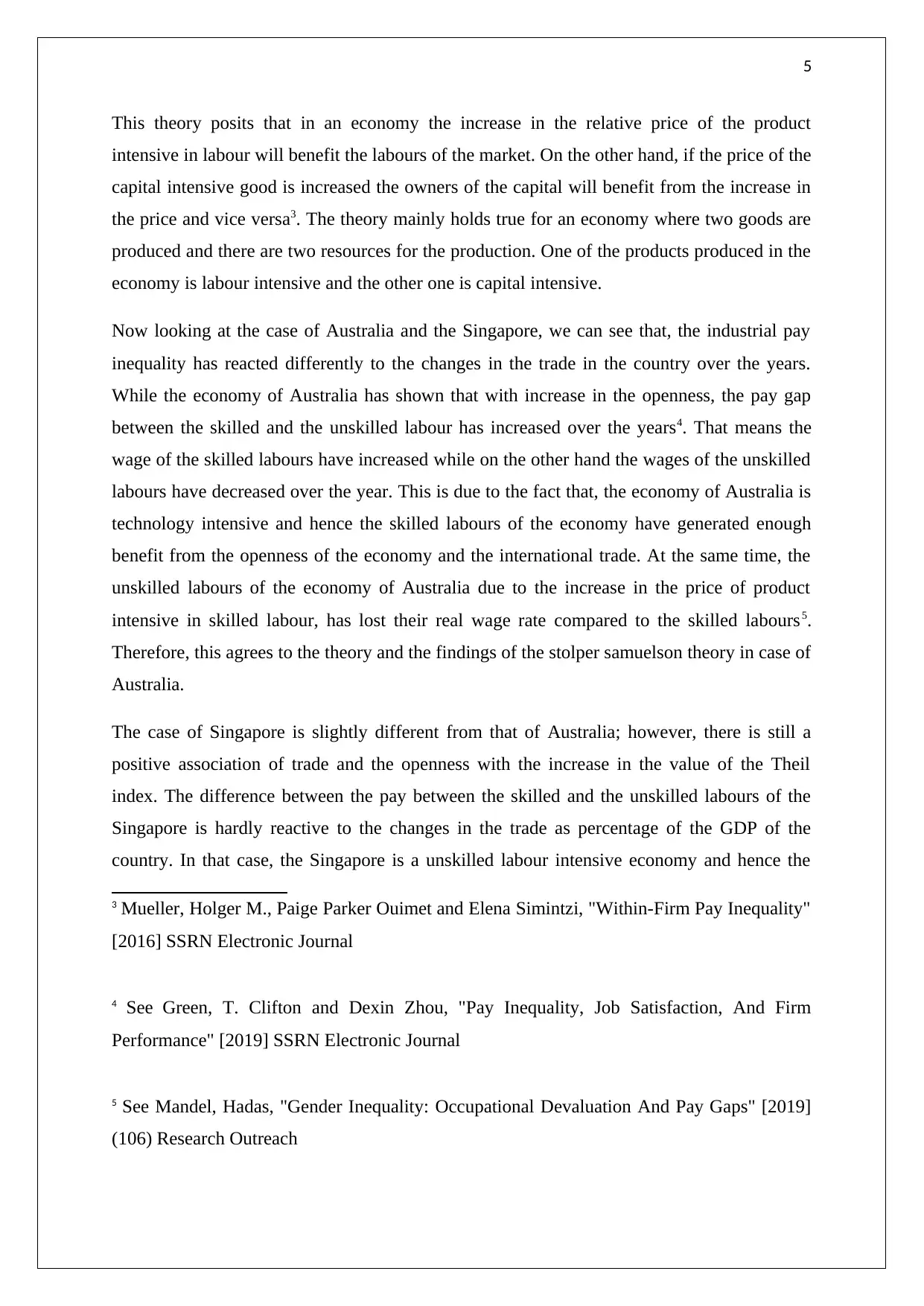
5
This theory posits that in an economy the increase in the relative price of the product
intensive in labour will benefit the labours of the market. On the other hand, if the price of the
capital intensive good is increased the owners of the capital will benefit from the increase in
the price and vice versa3. The theory mainly holds true for an economy where two goods are
produced and there are two resources for the production. One of the products produced in the
economy is labour intensive and the other one is capital intensive.
Now looking at the case of Australia and the Singapore, we can see that, the industrial pay
inequality has reacted differently to the changes in the trade in the country over the years.
While the economy of Australia has shown that with increase in the openness, the pay gap
between the skilled and the unskilled labour has increased over the years4. That means the
wage of the skilled labours have increased while on the other hand the wages of the unskilled
labours have decreased over the year. This is due to the fact that, the economy of Australia is
technology intensive and hence the skilled labours of the economy have generated enough
benefit from the openness of the economy and the international trade. At the same time, the
unskilled labours of the economy of Australia due to the increase in the price of product
intensive in skilled labour, has lost their real wage rate compared to the skilled labours5.
Therefore, this agrees to the theory and the findings of the stolper samuelson theory in case of
Australia.
The case of Singapore is slightly different from that of Australia; however, there is still a
positive association of trade and the openness with the increase in the value of the Theil
index. The difference between the pay between the skilled and the unskilled labours of the
Singapore is hardly reactive to the changes in the trade as percentage of the GDP of the
country. In that case, the Singapore is a unskilled labour intensive economy and hence the
3 Mueller, Holger M., Paige Parker Ouimet and Elena Simintzi, "Within-Firm Pay Inequality"
[2016] SSRN Electronic Journal
4 See Green, T. Clifton and Dexin Zhou, "Pay Inequality, Job Satisfaction, And Firm
Performance" [2019] SSRN Electronic Journal
5 See Mandel, Hadas, "Gender Inequality: Occupational Devaluation And Pay Gaps" [2019]
(106) Research Outreach
This theory posits that in an economy the increase in the relative price of the product
intensive in labour will benefit the labours of the market. On the other hand, if the price of the
capital intensive good is increased the owners of the capital will benefit from the increase in
the price and vice versa3. The theory mainly holds true for an economy where two goods are
produced and there are two resources for the production. One of the products produced in the
economy is labour intensive and the other one is capital intensive.
Now looking at the case of Australia and the Singapore, we can see that, the industrial pay
inequality has reacted differently to the changes in the trade in the country over the years.
While the economy of Australia has shown that with increase in the openness, the pay gap
between the skilled and the unskilled labour has increased over the years4. That means the
wage of the skilled labours have increased while on the other hand the wages of the unskilled
labours have decreased over the year. This is due to the fact that, the economy of Australia is
technology intensive and hence the skilled labours of the economy have generated enough
benefit from the openness of the economy and the international trade. At the same time, the
unskilled labours of the economy of Australia due to the increase in the price of product
intensive in skilled labour, has lost their real wage rate compared to the skilled labours5.
Therefore, this agrees to the theory and the findings of the stolper samuelson theory in case of
Australia.
The case of Singapore is slightly different from that of Australia; however, there is still a
positive association of trade and the openness with the increase in the value of the Theil
index. The difference between the pay between the skilled and the unskilled labours of the
Singapore is hardly reactive to the changes in the trade as percentage of the GDP of the
country. In that case, the Singapore is a unskilled labour intensive economy and hence the
3 Mueller, Holger M., Paige Parker Ouimet and Elena Simintzi, "Within-Firm Pay Inequality"
[2016] SSRN Electronic Journal
4 See Green, T. Clifton and Dexin Zhou, "Pay Inequality, Job Satisfaction, And Firm
Performance" [2019] SSRN Electronic Journal
5 See Mandel, Hadas, "Gender Inequality: Occupational Devaluation And Pay Gaps" [2019]
(106) Research Outreach
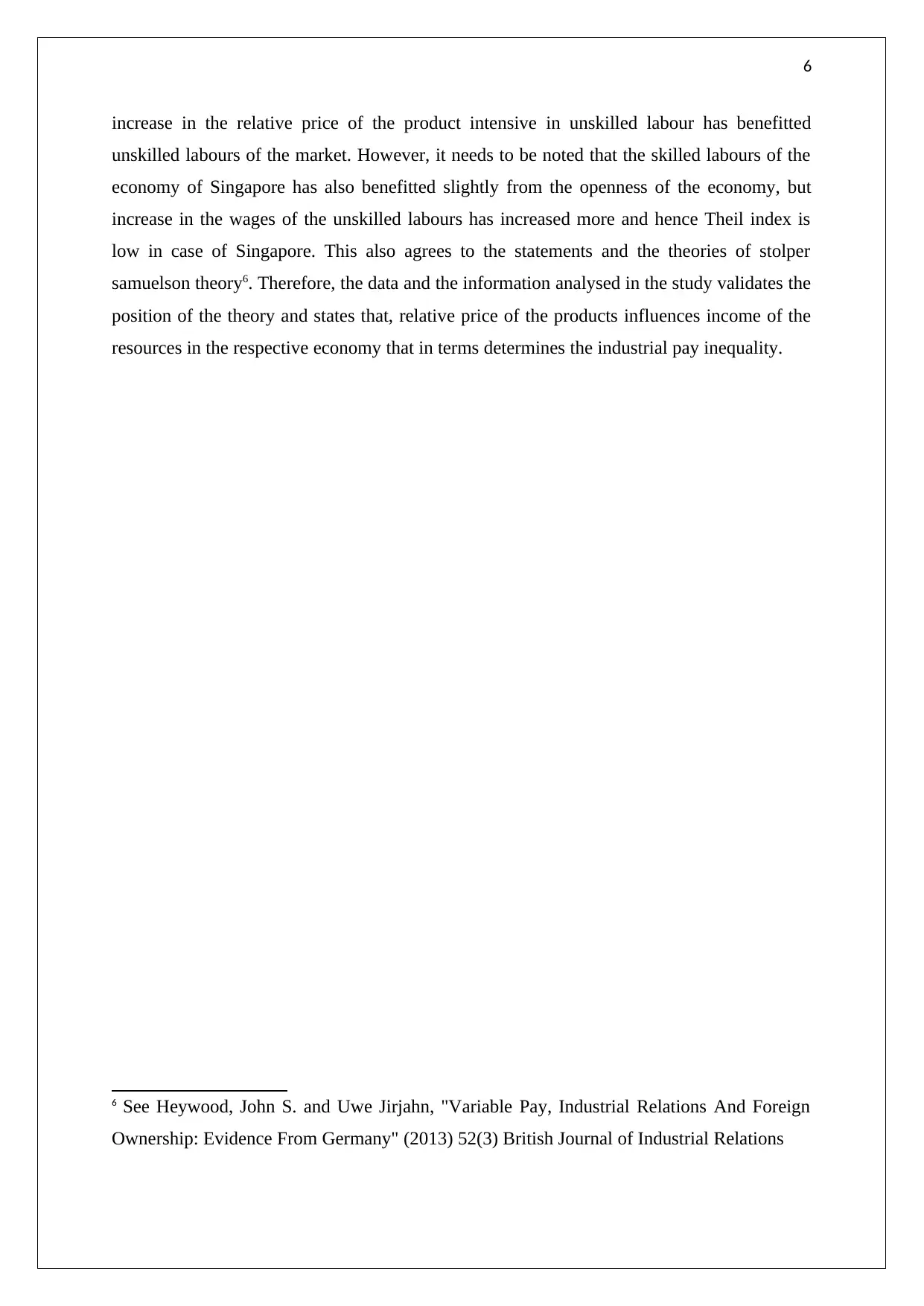
6
increase in the relative price of the product intensive in unskilled labour has benefitted
unskilled labours of the market. However, it needs to be noted that the skilled labours of the
economy of Singapore has also benefitted slightly from the openness of the economy, but
increase in the wages of the unskilled labours has increased more and hence Theil index is
low in case of Singapore. This also agrees to the statements and the theories of stolper
samuelson theory6. Therefore, the data and the information analysed in the study validates the
position of the theory and states that, relative price of the products influences income of the
resources in the respective economy that in terms determines the industrial pay inequality.
6 See Heywood, John S. and Uwe Jirjahn, "Variable Pay, Industrial Relations And Foreign
Ownership: Evidence From Germany" (2013) 52(3) British Journal of Industrial Relations
increase in the relative price of the product intensive in unskilled labour has benefitted
unskilled labours of the market. However, it needs to be noted that the skilled labours of the
economy of Singapore has also benefitted slightly from the openness of the economy, but
increase in the wages of the unskilled labours has increased more and hence Theil index is
low in case of Singapore. This also agrees to the statements and the theories of stolper
samuelson theory6. Therefore, the data and the information analysed in the study validates the
position of the theory and states that, relative price of the products influences income of the
resources in the respective economy that in terms determines the industrial pay inequality.
6 See Heywood, John S. and Uwe Jirjahn, "Variable Pay, Industrial Relations And Foreign
Ownership: Evidence From Germany" (2013) 52(3) British Journal of Industrial Relations
⊘ This is a preview!⊘
Do you want full access?
Subscribe today to unlock all pages.

Trusted by 1+ million students worldwide
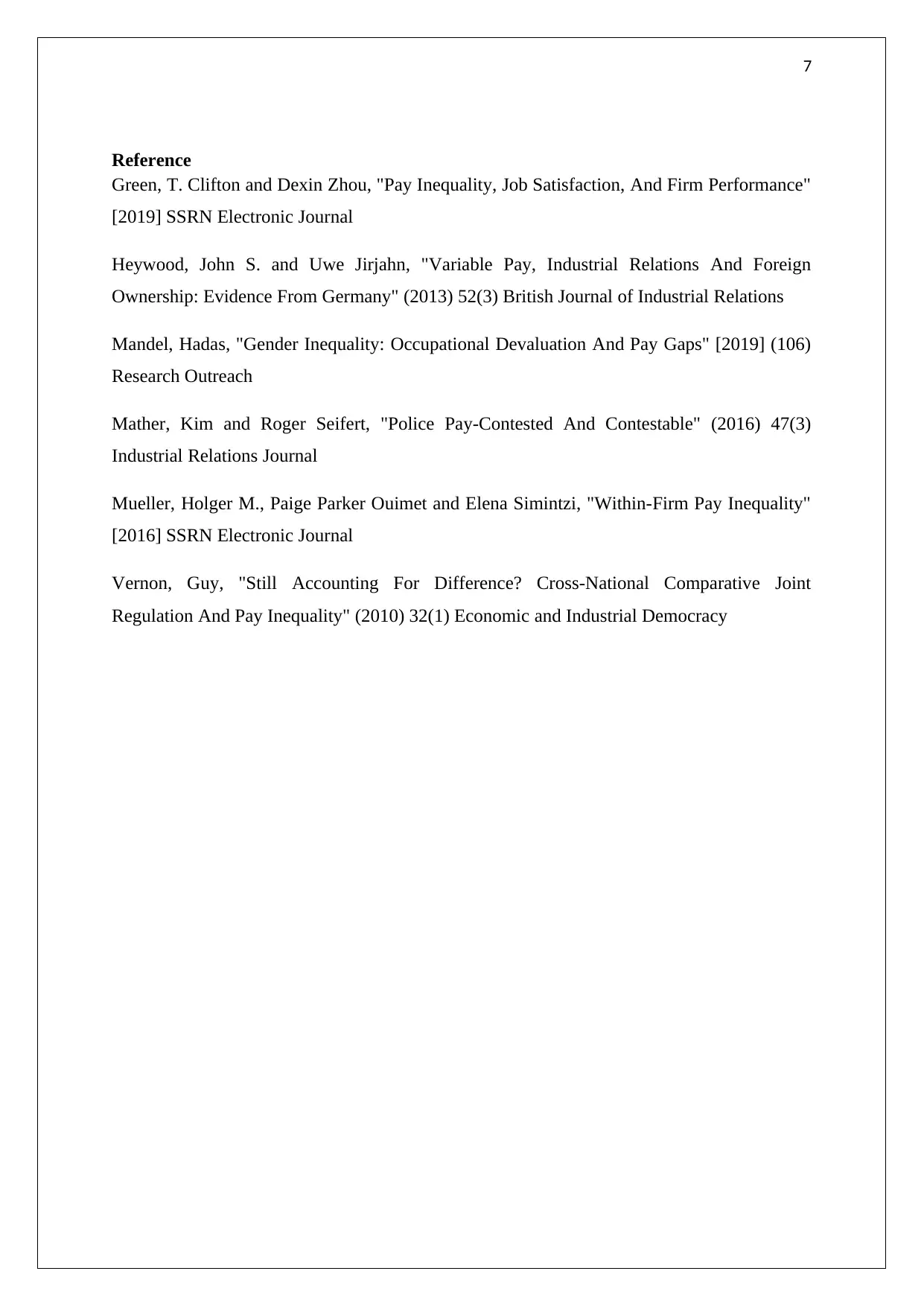
7
Reference
Green, T. Clifton and Dexin Zhou, "Pay Inequality, Job Satisfaction, And Firm Performance"
[2019] SSRN Electronic Journal
Heywood, John S. and Uwe Jirjahn, "Variable Pay, Industrial Relations And Foreign
Ownership: Evidence From Germany" (2013) 52(3) British Journal of Industrial Relations
Mandel, Hadas, "Gender Inequality: Occupational Devaluation And Pay Gaps" [2019] (106)
Research Outreach
Mather, Kim and Roger Seifert, "Police Pay-Contested And Contestable" (2016) 47(3)
Industrial Relations Journal
Mueller, Holger M., Paige Parker Ouimet and Elena Simintzi, "Within-Firm Pay Inequality"
[2016] SSRN Electronic Journal
Vernon, Guy, "Still Accounting For Difference? Cross-National Comparative Joint
Regulation And Pay Inequality" (2010) 32(1) Economic and Industrial Democracy
Reference
Green, T. Clifton and Dexin Zhou, "Pay Inequality, Job Satisfaction, And Firm Performance"
[2019] SSRN Electronic Journal
Heywood, John S. and Uwe Jirjahn, "Variable Pay, Industrial Relations And Foreign
Ownership: Evidence From Germany" (2013) 52(3) British Journal of Industrial Relations
Mandel, Hadas, "Gender Inequality: Occupational Devaluation And Pay Gaps" [2019] (106)
Research Outreach
Mather, Kim and Roger Seifert, "Police Pay-Contested And Contestable" (2016) 47(3)
Industrial Relations Journal
Mueller, Holger M., Paige Parker Ouimet and Elena Simintzi, "Within-Firm Pay Inequality"
[2016] SSRN Electronic Journal
Vernon, Guy, "Still Accounting For Difference? Cross-National Comparative Joint
Regulation And Pay Inequality" (2010) 32(1) Economic and Industrial Democracy
1 out of 7
Related Documents
Your All-in-One AI-Powered Toolkit for Academic Success.
+13062052269
info@desklib.com
Available 24*7 on WhatsApp / Email
![[object Object]](/_next/static/media/star-bottom.7253800d.svg)
Unlock your academic potential
Copyright © 2020–2025 A2Z Services. All Rights Reserved. Developed and managed by ZUCOL.





